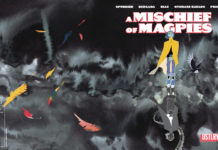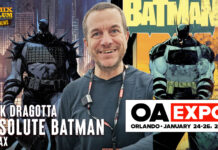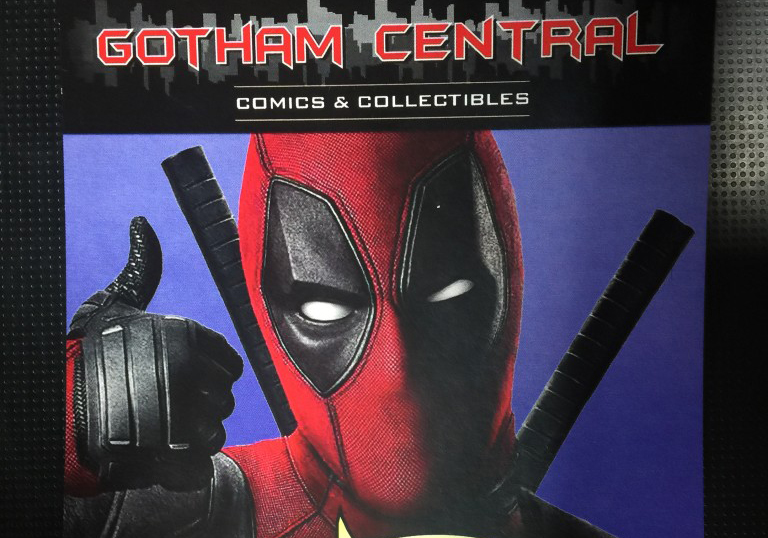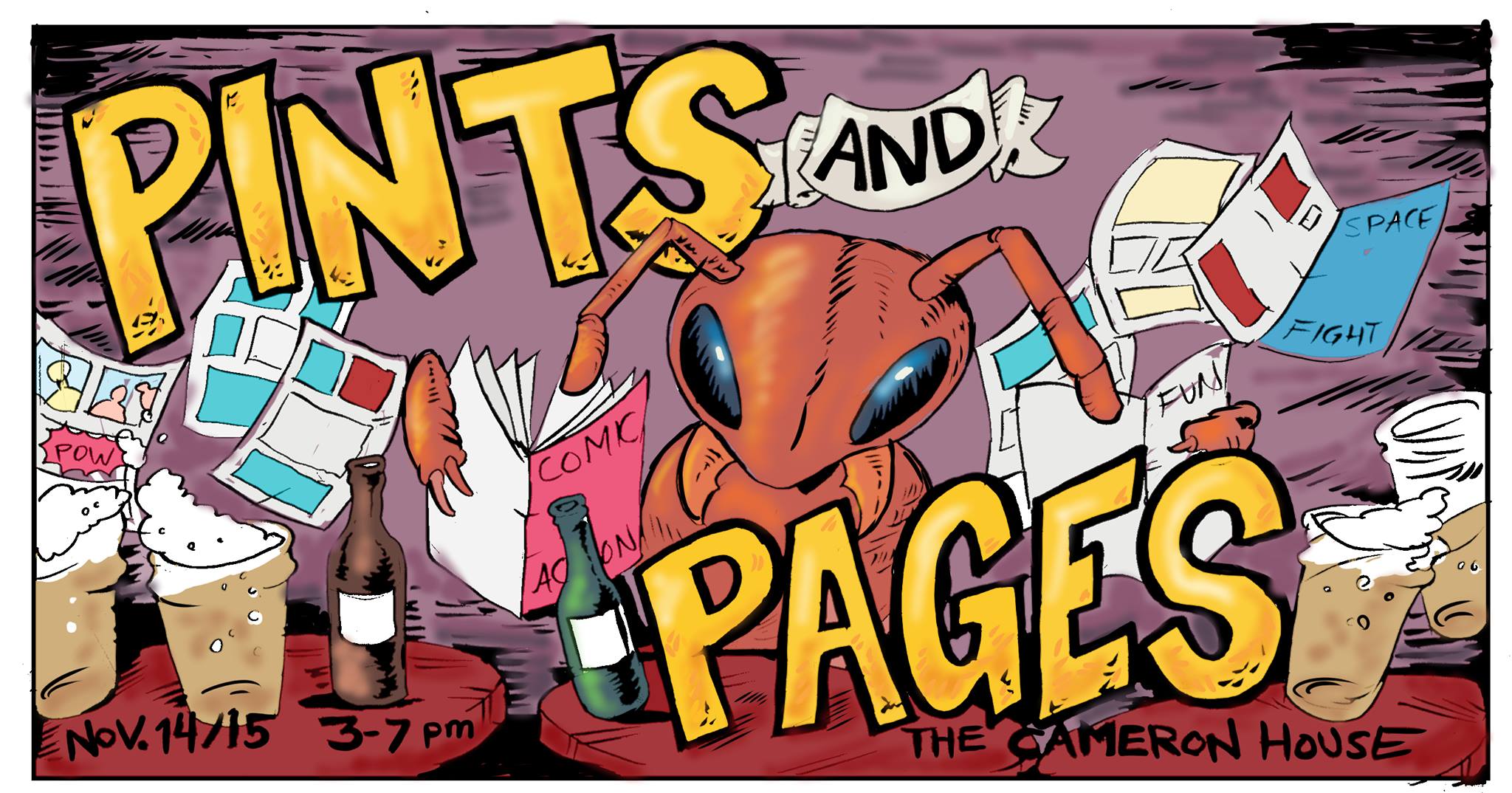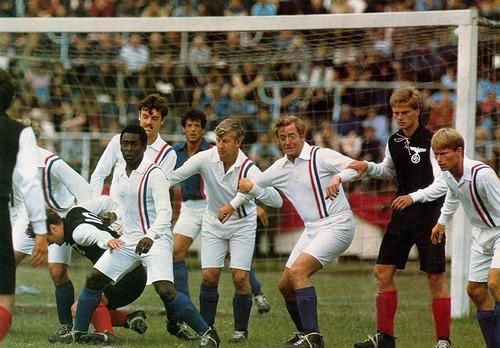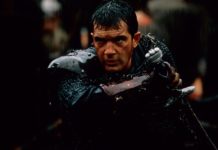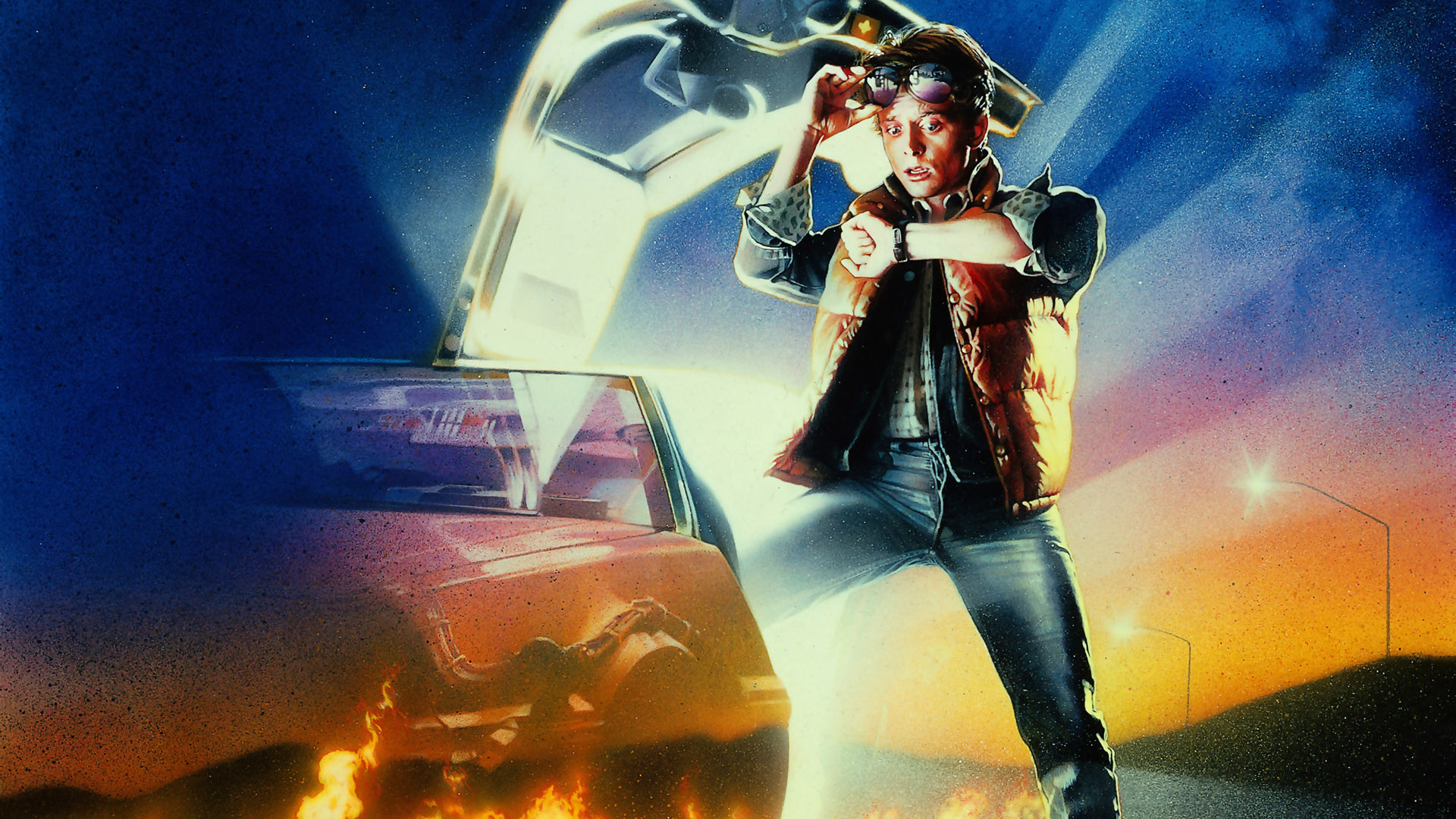Timecode Classics: World Cup Edition
World Cup fever has hit everybody at the Comix Asylum office; computer monitors and mobiles phones are on double duty as CA staff have the games on the in the background as they work to get articles completed for your reading pleasure. Peter Van Horne is always late to the office, so no one gave his absence a second thought until the Editor realized PVH booked a flight to Russia on the company card. All attempts to reach him have failed, though this morning he sent an email with two attachments; this Timecode Classics review, and a photo of PVH, Alex Ovechkin, and Vladimir Putin swimming in a Moscow fountain with the Stanley Cup.
“After you give me ball here, I do this…this…this…this…this…this…this…goal.”
Escape to Victory
Sports films are a common genre; baseball, basketball, boxing, football and hockey are the most popular. You don’t really see many films about curling, save for Men with Brooms, mixed martial arts (Here Comes the Boom), or tennis (Battle of the Sexes). Soccer (football) hasn’t fared much better, unless you count Ladybugs with Rodney Dangerfield and The Final Goal with Erik Estrada. Some films work well as comedies (see Major League, The Longest Yard, and Slap Shot), while others are more compelling as dramas (Rocky, Creed, Eight Men Out).
This is a serious topic, especially with my newfound drinking mates Dimitri and Boris; we met at Moscow’s Hotel Metropol bar where I overheard their argument over whether Carl Weathers would have been a better Benjamin Sisko than Avery Brooks (note: Carl Weathers auditioned for the role of Sisko that eventually went to Brooks). I instantly knew these two guys were the perfect Russians; how else can you explain their love and admiration for Apollo Creed, Hawk and sci-fi? I politely interjected myself into the conversation, not something one does lightly in Russia. I was taking a chance, but it turned out they were not only sci-fi fans, but fans of Comix Asylum and Timecode Classics and we have become inseparable ever since. Though to be fair, Dimitri and Boris gave me a stern lecture about leaving them in the lurch over the Gotham reviews and decided to get me heavily drunk as punishment, but they also volunteered to be my tour guides; showing me a Moscow no tourist has ever seen and lived to tell the tale. I feel at the same time both privileged and scared where, over a bottle or four of rare and expensive pre-war Wolfschmidt vodka from Riga we discuss group matches and the lack of football films in cinema.
I learned quickly that vodka should be served ice-cold and neat as accompaniment to caviar or smoked salmon. Suffice it to say, copious amounts of both were brought to the bar, along with the Wolfschmidt in a small carafe resting in a bowl of crushed ice. My new comrades even taught me a nice trick when handling vodka; take a pinch of black pepper and drop it on the surface of the drink. The grains, in sinking to the bottom of the glass, take with them fusel oils and other harmful substances. Since my doctor told me during my last physical that I should be mindful of fusel oils and other harmful substances, I happily went along. The universe is unfolding as it should, and it was never clearer when general consensus was reached over the best football film, Victory, directed by John Huston (1981).
Victory merges two genres; it is both a war film and a sports film not meant to be taken very seriously, somewhat on par with John Sturges’ The Great Escape (1963). Vincent Canby’s original review in The New York Times said “P.O.W. life as not much different from life in a rather severe boarding school for adult males. The beds may be hard, the food boring and the hot water scarce, but there’s terrific esprit de corps, camaraderie, good fellowship and even a sense of fair play, at least on the part of one of the camp’s German officers.” Perhaps the carefree mood comes from Huston himself, whose previous two films, The Man Who Would Be King (1975, also with Caine) and Wise Blood (1979), were fairly demanding and presumably wanted to take a lighter breath after back to back heavier films.
The film centers on a team of Allied prisoners of war coached and led by English Captain John Colby (Michael Caine), a professional footballer for West Ham United before the war, who agree to play an exhibition match against a German team organized by Major Karl von Steiner (Max von Sydow), only to find themselves involved in a German propaganda stunt, a statement to Nazi-occupied Europe and the rest of the world that Germany has superior athletes.
Another POW, Robert Hatch (Sylvester Stallone), an American serving with the Canadian Army, is not initially chosen. He eventually nags the reluctant Colby into letting him on the team as the trainer, as Hatch needs to be with the team to facilitate his upcoming escape attempt. Both stories merge as the Allied players not only want to win, but also to use the heavily-publicized, propaganda match as an occasion for making their own great escape, with help from the French Resistance.
Rounding out the cast are former professional footballers as both the Allied team and German team. It’s a who’s who of former professional stars like Pelé, the Brazilian god of football, Bobby Moore, John Wark, Osvaldo Ardiles, Kazimierz Deyna, Søren Lindsted, Paul Van Himst, and Werner Roth.
Substitute Cristiano Ronaldo, Lionel Messi, Neymar, Mohamed Salah, David de Gea, Eden Hazard, Antoine Griezmann, Thomas Mueller, Sadio Mane, and James Rodriguez for the aforementioned players and today’s fans would get heart palpitations at the mere thought of these guys on film together, and that was the same excitement generated with the inclusion of Pele et al in the film.
Former Burnley FC player Les Shannon choreographed the game presented in the film’s third act, while Pelé was credited in designing the plays. Former English international goalkeeper Gordon Banks coached Stallone on the skills needed to be effective between the pipes.
Stallone was in a bit of a transformative period at this time; having great success with Rocky (1976) and its sequel (1979), he also had a few misses with F.I.S.T. (1978) and Paradise Alley (1978). Perhaps wanting to branch out from typecasting, he took the role of Hatch before returning to Rocky III (1982) and starring as his other now iconic character John Rambo in First Blood (1982). I know Stallone gets carved for not being a “serious” actor, but with the right material and character, he does a good job. He’s not Laurence Olivier, but he doesn’t have to be; while Stallone used his physique to great effect in his films, his most endearing quality has been to portray the underdog, which most people can identify with. And for the record, he is a good actor, as seen in his Academy Award nominated role as Rocky in Creed and as lumpy loser Freddy Hefflin in Cop Land, where he holds his own against heavyweights Robert De Niro and Harvey Keitel.
Here he spars well against Caine, who seems gives a great performance in the role of Colby – a character with some weight one doesn’t always see in such films. Caine came off a stellar decade in the ‘70s, including Get Carter (1971), Sleuth (1972) with Olivier, and in Huston’s The Man Who Would Be King alongside Sean Connery (1975). Caine brings with him the affable everyman but with also enough layers to distance his character from caricature. Remember, we are talking about only one of three men who have been nominated for Academy Awards for acting in five different decades (Laurence Olivier and Jack Nicholson are the other two).
von Sydow also brings some weight to the role of Major von Steiner, the “good “ German officer and a pre-war football star in his own right. von Sydow is probably best known for playing a chess match against Death in 1957’s The Seventh Seal, directed by Ingmar Bergman; I will always fondly remember him as King Osrić in Conan the Barbarian (1982) and Brewmeister Smith in Strange Brew (1983).
Huston uses the camera to great effect in the film; preferring to introduce the P.O.W. camp which Canby described as “a fine, lofty, panoramic long shot, filled with prisoners going about the camp’s business, set in a broad, lonely landscape that defines the isolation of the P.O.W.’s better than almost anything that comes after.”
The big set piece is the match between the Allies and the Germans, and here Houston doesn’t disappoint. The wonderfully choreographed, climatic match clearly shows why this is called “The Beautiful Game”, as well as capturing Pelé’s extraordinary talent and leaving absolutely no doubt he is always in the conversation for GOAT.
While drinking vodka, eating caviar and smoked salmon, and watching the group matches on the bar’s television, I can’t help but have a soft spot for Victory; how well photographed the final match is. I turn to the television and stare at what appears to be soft lighting; I wonder if the production team have somehow read my mind and for a brief moment presented a soft-lit shot worthy of the film. Then my arm hurts; it’s Boris, slapping my arm and telling me the hotel was once bugged by the KGB. Then the house lights dim, as if to continue the motif established in the film, but I quickly decide I’m going blind from the vodka and ask my two comrades to take me out for a post drink meal. Dimitri says he knows the perfect place; it serves alcohol until 5am. I’m glad I bought travel insurance.



